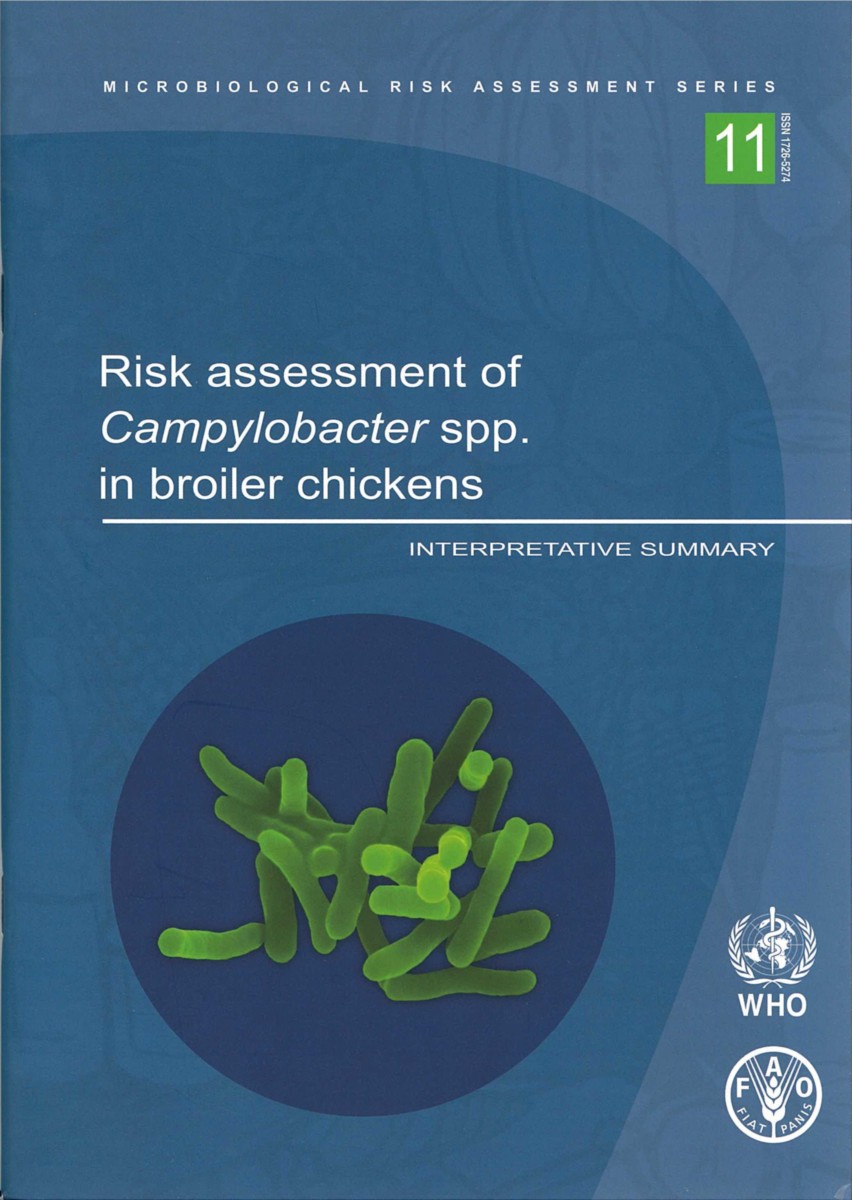Risk Assessment of Campylobacter spp. in Broiler Chickens
Interpretative Summary
- Publisher
World Health Organization - Published
4th June 2010 - ISBN 9789241547352
- Language English
- Pages 50 pp.
- Size 6.875" x 10"
Campylobacter is a leading cause of enteric infections in many countries. The principal reservoir of pathogenic Campylobacter spp. is the alimentary tract of wild and domesticated mammals and birds. Poultry meat is an important vehicle for foodborne transmission of Campylobacter spp., particularly Campylobacter jejuni.
FAO and WHO have undertaken a risk assessment of Campylobacter spp. in broiler chickens. An interpretative summary of that work is described in this volume. This assessment compared the risk for a variety of scenarios and mitigation measures for control of the organism in a range of broiler chicken products. It also includes a review and analysis of current scientific information and a description of the risk model.
This volume and others in this Microbiological Risk Assessment Series contain information that is useful to both risk assessors and risk managers, the Codex Alimentarius Commission, governments and food regulatory agencies, industry and other people or institutions with an interest in Campylobacter spp. in broiler chickens, the public health impact and the use of risk assessment in the evaluation and selection of potential control strategies.
Acknowledgements
1. Introduction
2. Scope of the Risk Assessment
3. Hazard Identification
4. Risk Assessment Model Overview
5. Scenario Analysis
6. Summary and Key Findings
References
World Health Organization
World Health Organization is a Specialized Agency of the United Nations, charged to act as the world's directing and coordinating authority on questions of human health. It is responsible for providing leadership on global health matters, shaping the health research agenda, setting norms and standards, articulating evidence-based policy options, providing technical support to countries, and monitoring and assessing health trends.


